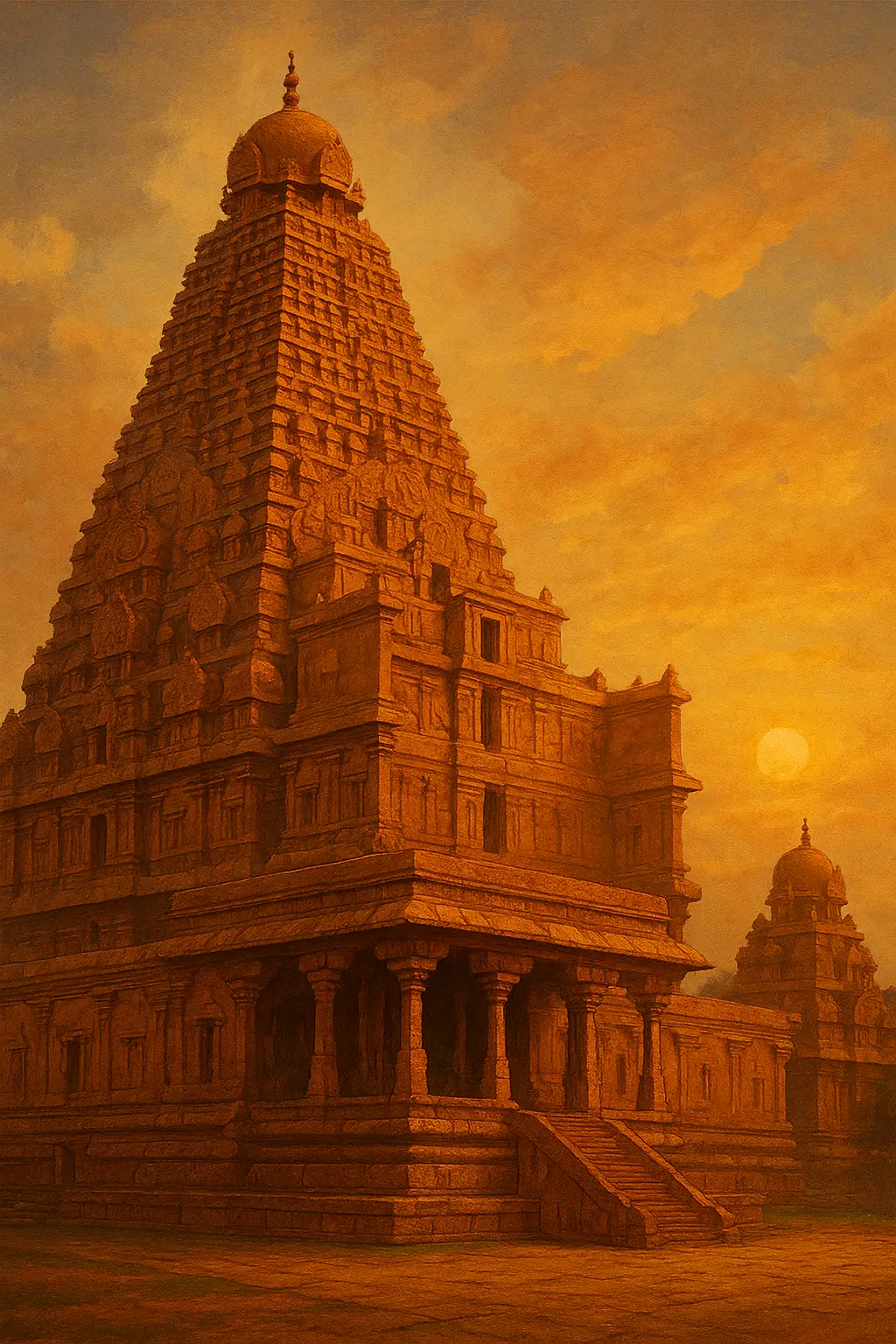Built over a thousand years ago, the Brihadeeswara Temple in Thanjavur, Tamil Nadu, continues to captivate historians, engineers, and travelers alike. Attributed to Rajaraja Chola I and constructed around 1010 CE, this granite marvel stands as a testament to a civilization with extraordinary architectural knowledge.
One of the most astonishing facts is that the entire temple is made from granite—an material incredibly difficult to quarry, transport, and carve. Even more intriguing, the nearest granite source lies over 50 kilometers away, yet over 130,000 tons of it were used. How such a large amount of heavy stone was transported and assembled without modern tools, cranes, or roads remains unclear.
The temple’s towering vimana (main tower) stands 66 meters (216 feet) high and is topped by a single granite capstone weighing approximately 80 tons. Historical accounts suggest a 6-kilometer-long ramp was constructed to drag the stone to the summit. While plausible, no clear archaeological traces of such a ramp remain, and many questions persist about how balance and friction were managed.
Even more impressive, the entire structure was built without mortar. The stones were cut and interlocked with such precision that the temple has survived over a millennium of earthquakes and extreme weather. This points to an advanced understanding of architectural stability far ahead of its time.
Inside, the temple walls still showcase vivid Chola-era frescoes, depicting religious themes and daily life, suggesting the temple was not just a spiritual center but a hub for cultural and intellectual life.
Local lore says that the vimana casts no shadow at noon, an idea debated by scholars but symbolic of the temple’s astronomical alignment. Whether literal or metaphorical, it highlights the builders’ advanced knowledge of solar geometry.
Construction was reportedly completed in just six to seven years, an incredibly short timeline for such a massive structure. Some researchers suggest that ancient Indian civilizations may have possessed construction techniques or organizational methods now lost to time.
Adding to the mystery are rumors of sealed underground chambers and tunnels, some believed to connect with other ancient sites. While largely unexplored, these stories evoke further wonder about what might lie hidden below the surface.
Surprisingly, few documents from the Chola period explain the construction in detail. It is possible that such knowledge was sacred, preserved only by select architects and artisans.
Disclaimer
This article is based on historical research, oral tradition, and local lore; some details remain unverified. All photos are for illustration purposes only.


